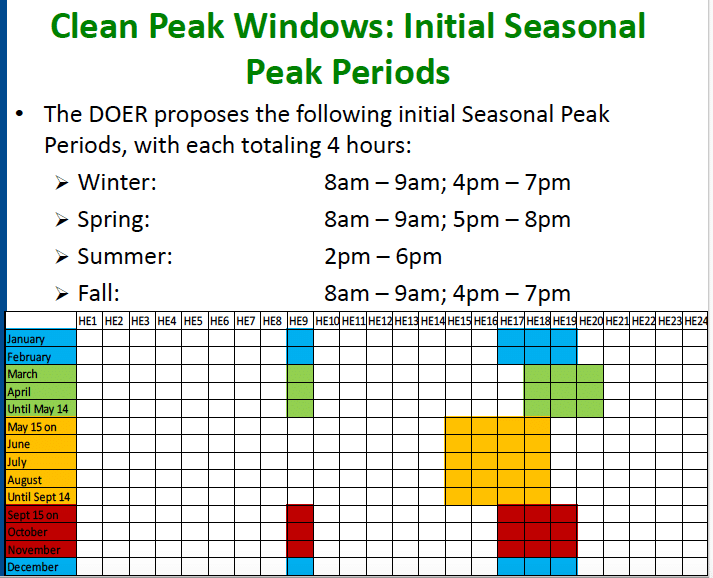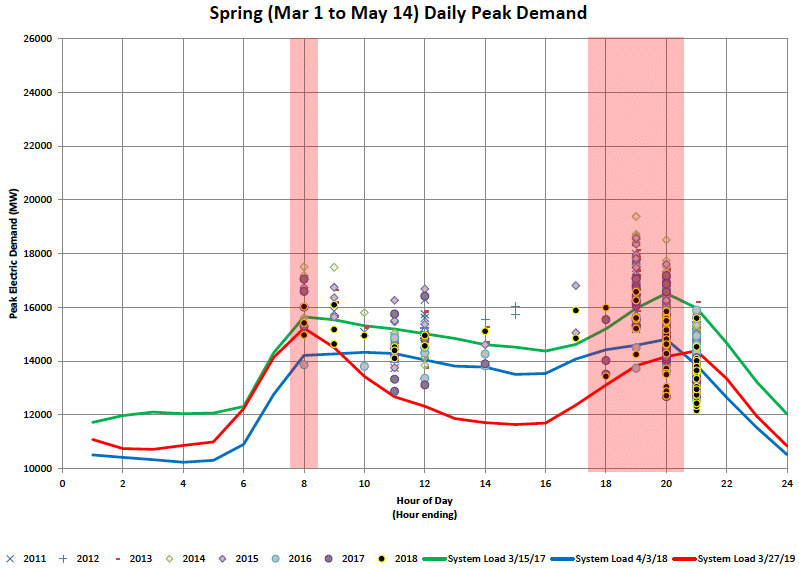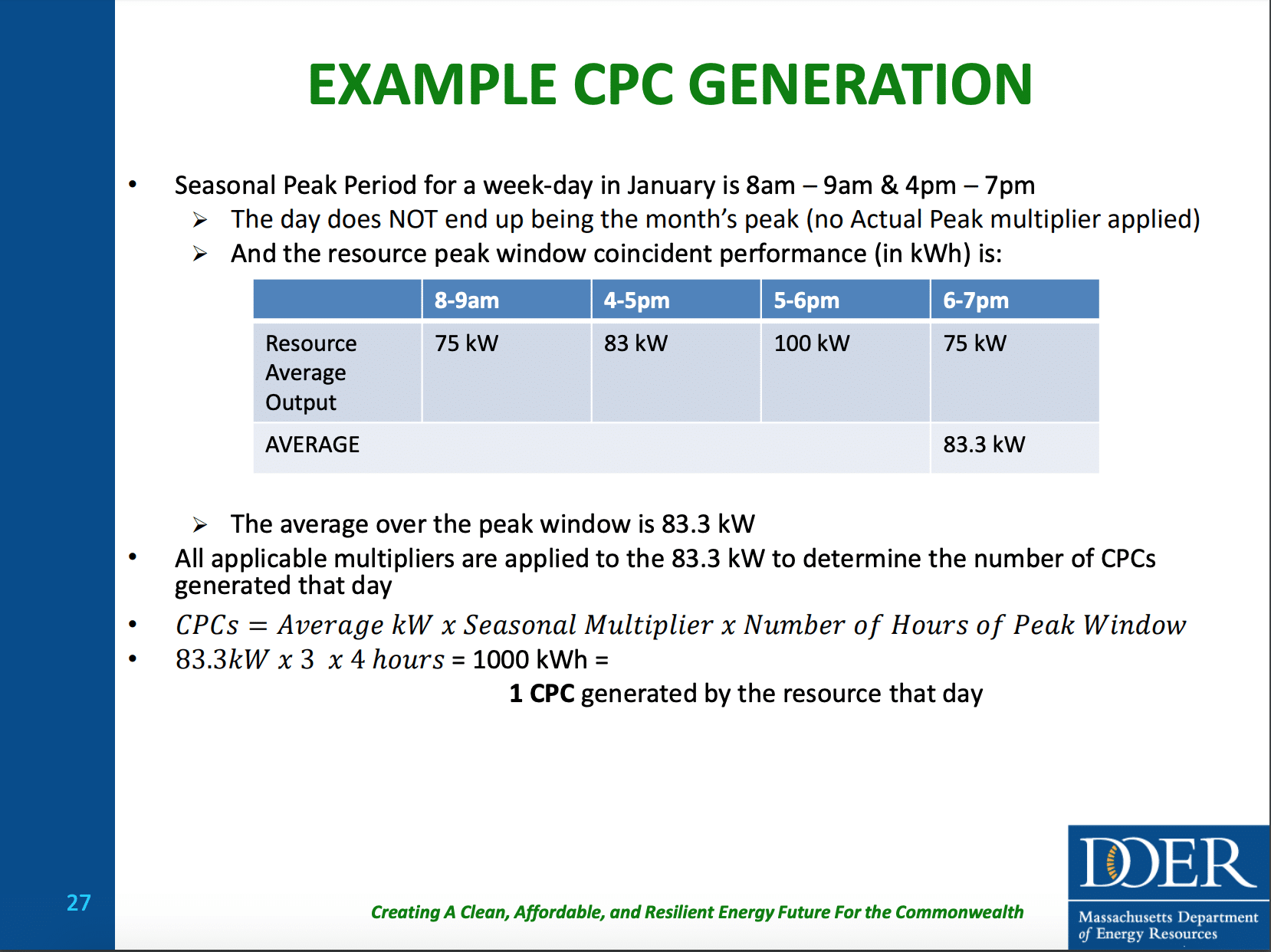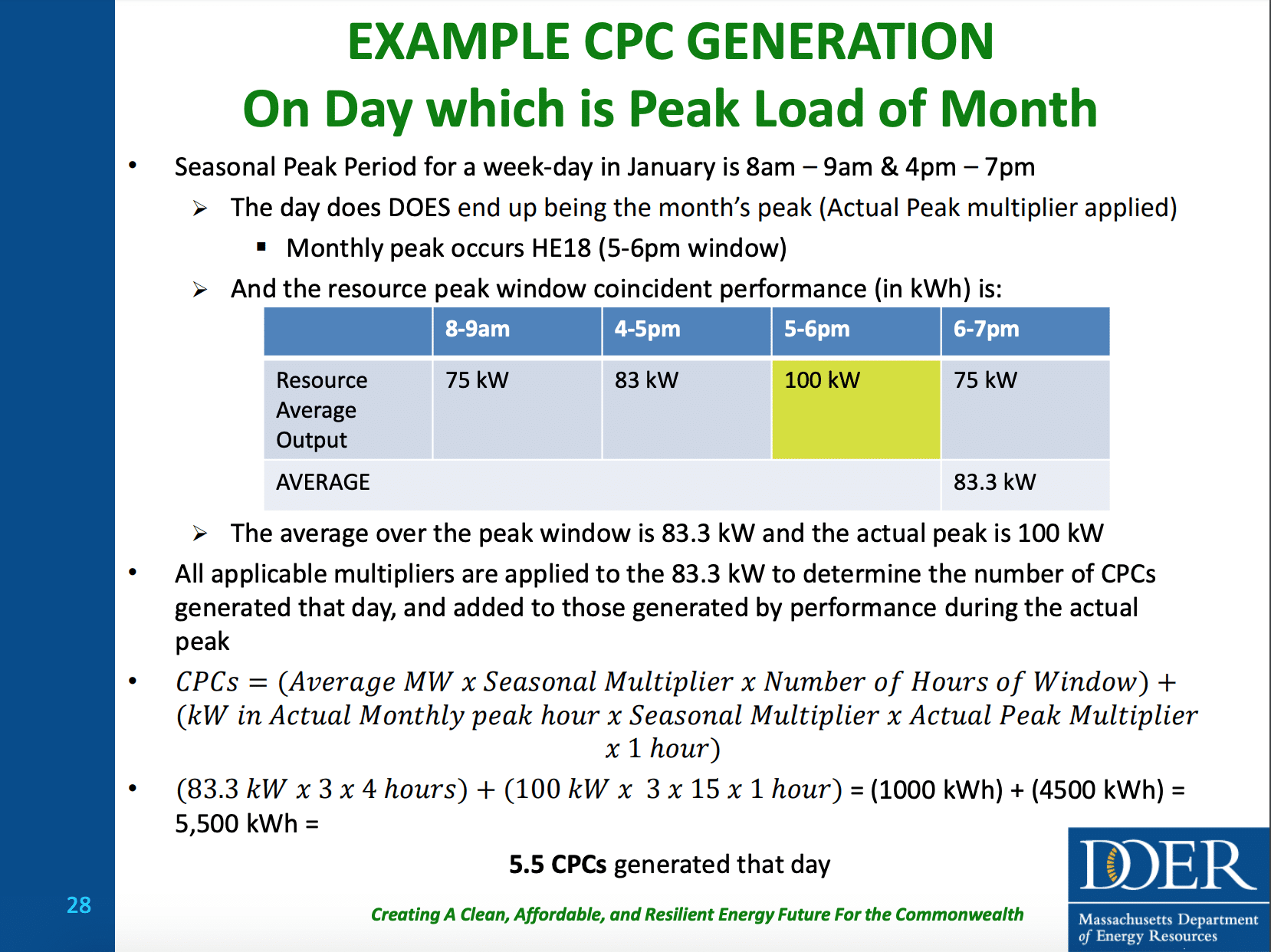Massachusetts is not exactly a natural choice for a leading solar state. Not only is it fairly close to the Canadian border, but the wet Atlantic climate does not offer a lot of sun. Regardless, Massachusetts is a top state for deployment of solar, with nearly 2.5 GW online as of the end of 2018, meeting 5.7% of the state’s electric demand during the year.
The Bay State’s success with solar is in sharp contrast to near-negligible deployment of wind or other renewable energy sources. This and the weather patterns of New England, with its Nor’easters and damp, cold winters present a policy challenge: solar doesn’t meet Massachusetts’, or New England’s, greatest energy needs.
Like other regions of the United States, the highest annual electricity use arrives on hot summer days in New England, but unlike many other regions electricity prices are the highest during the winter, particularly during cold spells. This is due to supplies of natural gas being constrained by pipeline capacities, and this gas being shared between heating and electricity generation. Thus winter is also when the region burns the dirtiest fuels, including coal and petroleum, to keep the lights on.
So while Massachusetts is known nationally as an innovative state for policy, the administration of Governor Charlie Baker (R) has compelling reasons for designing the policy whose first draft which was unveiled today in Boston: the Clean Peak Standard. This policy is designed to incentivize energy sources that not only supply zero-carbon electricity, but supply it when it is needed.
Getting ahead of the duck
A closer look at the details unveiled today indicate that winter peak is not the only driver of this policy.
Like California and other states that have deployed a lot of solar, New England has begun to see the pattern of electricity demand that happens when behind-the-meter solar is widely deployed but not counted by grid operators: the duck curve. This is characterized by net load which falls during the day, with a small peak in the morning and a larger one in the evening.
And this was perhaps the most surprising characteristic of the Clean Peak Standard which was unveiled by the Massachusetts Department of Energy Resources (DOER): it is planned to incentivize not only winter peaks, but to match system peaks in all four seasons, with four hours designated as peak periods in the summer, fall, winter and spring.

DOER has presented these as the current system peaks, but here the data offered with the presentation did not fully back up their case. Notably, there isn’t much of a morning peak yet in Spring or Fall. And this is what led pv magazine to conclude that this policy is about anticipating the duck curve as much as meeting the dirty, expensive winter peak, as with higher levels of solar, there absolutely will be such a pattern.

Program design
In terms of the basic program design, Clean Peak Standard is a lot like the renewable portfolio standard (RPS) policies that have been deployed in Massachusetts and 28 other states. It creates a system of Clean Peak Credits (CPC) that qualified generators create and utilities must purchase.
The program outlines four resources eligible for CPCs:
- new RPS Class 1 eligible resources which came into operation on or after the beginning of 2019
- existing Class 1 and 2 resources, but only those resources which are paired with a qualified energy storage system
- qualified energy storage systems
- demand response resources
Both behind and front-of-the meter resources are eligible for the program. Distribution connected resources must be connected to the Commonwealth of Massachusetts electric power system, while transmission connected resources must be connected in the ISO-NE control area.
In many ways it seems like this program was designed for solar + battery storage. Four hours per day are designated as peak hours, and qualified energy storage solutions must have a four-hour duration – the typical duration for the lithium-ion batteries which are commonly deployed to accompany solar PV.
Details of the peak
One interesting detail of the program is that in addition to providing credits for meeting demand during the designated periods, there are additional credits provided for meeting demand during the day of the month with the highest peak. This is calculated according to the formula shown below:

In addition to this extra credit, there is also a seasonal multiplier, to incentivize meeting demand when the need is greatest. Four other multipliers are also being considered but are not a formal part of the policy: a resilience multiplier, a minimum load negative multiplier, and a distribution circuit multiplier.

Next steps
So now that the program has been announced, where do we go from here? In the immediate future, we have now entered the period for public comment on the proposal. The comments can be submitted to DOER.CPS@mass.gov and will be open for submission until April 12. During and after that period, the final consultant report will be released, and after comments have been received the amended regulations will be sent to the Joint Committee on Telecommunications, Utilities, and Energy.
After all proposals, comments and amendments have been finalized, the DOER anticipates that the program will be rolled out at the beginning of 2020. This is an inspiringly quick timeline, one which stands in stark contrast to DOER’s history of passing energy policy, namely the SMART program, which took nearly two years to be rolled out.
This content is protected by copyright and may not be reused. If you want to cooperate with us and would like to reuse some of our content, please contact: editors@pv-magazine.com.










ISO-NE has a nice page describing the status of behind-the-meter PV and other and its effects on the New England demand.
See https://www.iso-ne.com/about/what-we-do/in-depth/solar-power-in-new-england-locations-and-impact
Please remove the duck hunting picture.
I won’t explain why.
Excellent coverage, and some good foresight in MA happening with seasonal adjustments… and most importantly consideration for morning peak before it arrives as it will.
Looking at the 3 IOU TOU schedules in California the other day… there are no blocks/considerations for morning peak…. then this will require another lonnnnggggg cycle of rate reform & implementation dates to correct for as the problem will only grow.
Obviously, the best option is what NY REV is trying to get through with VDER and (1st phase) LMP dynamic pricing for every takeoff/injection point within each of NYISO’s 11 sub-regions.
Thank you.
I agree that as more solar is installed, morning peak must be addressed eventually, but I’m not so sure how close California is to having an issue here, given that their annual problem is still summer weather, and how much flexible gas-fired generation (and increasingly flexible imports) they have to meet morning peak.
As for VDER, I think the devil is in the details. I supported the value of solar concept until I saw it in practice, which is that the utilities have found ways to manipulate an overly complex system so that it doesn’t work for solar.
If we are going to have VDER, VOST or other rates, these need to be set by impartial regulators with a minimum of utility meddling.